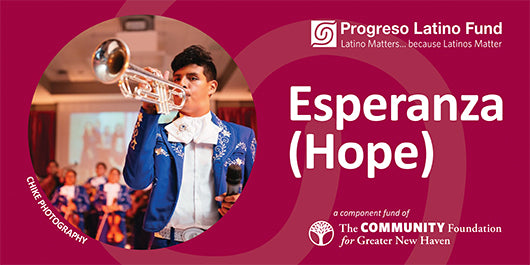Gary Kyshon Miller Sr., age 20. Walter Jaynes Sr., age 19. These and more than 600 other names are etched into bricks on a broad, curving walkway that leads to New Haven’s new Botanical Garden of Healing Dedicated to Victims of Gun Violence. The garden, fronted by a meadow of wildflowers and anchored by a metal sculpture of grieving families, is healing for many. “It gives peace,” says Pamela Jaynes, who lost her son, Walter Marquese Tyrell Jaynes, Sr., to gun violence in 1997.
But before you reach the serenity of curved garden benches in view of West Rock’s red cliffs, you must walk over and past the names of everyone killed by gunfire in New Haven since 1976. If the day is breezy, low-pitched wind chimes in the towers that line the path will accompany you. Take your time. Notice how many have been lost to domestic violence, gang warfare, retribution, stray bullets. Notice their ages.
sponsored by
When you reach the end, where the path spills into a small, circular amphitheater, take a seat and listen to the click of dried leaves skipping across the cement. Watch birds soaring on the updrafts beside the cliffs that hover above the treetops. Rub a leaf of purple-blooming catmint between your fingers and breathe in its sweet scent. Sit in the shade of the “tree of life.” Hear the voices of children walking along a path on the other side of the West River. Read quotations embedded in a low stone wall; written by family members, they memorialize those lost.
Designed by the New Haven architecture firm Svigals + Partners, the garden also includes a two-story metal “perspective sculpture” that depicts families in grief. The torsos of some figures bear cut-out voids shaped like their missing loved ones. Tall vertical bars rise through the empty spaces, both emphasizing the gaps and lifting the entire ensemble upward in a hopeful gesture.
The garden of healing is the brainchild of Marlene Miller-Pratt, who lost her son, Gary Kyshon Miller, Sr., to gun violence in 1998. He was 20 years old. Miller-Pratt had found her own peaceful spot to sit and think of her son at the Marsh Botanical Gardens, but she wanted a place for every grieving mother to go. She also wanted to give the city and its residents a wake-up call. “I want the people to see that we do have a problem,” she says.
A science teacher at Career High School, Miller-Pratt was driven to take action after hearing the nonchalant reaction of a teenage girl to a shooting near the school one day: “Another kid just got killed.” She met with local officials, drew up a plan and asked one of her students to draw it. She visited Mayor Toni Harp and Governor Dan Malloy to drum up funding. She collected every piece of paperwork she might need. And she found a team of peers at a meeting of Survivors of Homicide at New Haven Police Department headquarters who were willing to walk this road with her. Additional funding came from foundations and private donors. The Urban Resources Initiative took on stewardship of the site. In June, the garden was dedicated.
The memorial walk begins in 1976 because that’s how far back police department computerized records go, Jaynes says. But gun violence in the city reaches farther back still. Earl and Yvonne McCoy were drawn to the garden one recent afternoon with several loved ones in mind: Earl’s aunt, Carolyn Sykes, his cousin, Michael Sykes, and Yvonne’s brother, Matthew Barrett. As they entered the park, the couple walked slowly, their heads bowed, reading the names. You won’t find their family’s names here—at least, not yet. Earl’s aunt and cousin were killed in 1966, and Yvonne’s brother, Matthew Barrett, was not a victim of gun violence; he was beaten to death at his New Haven car dealership in 2005. As a member of the survivors’ group, she contributed one of the quotations in his memory. “It brings back memories and what could have been, you know,” Earl says, sitting on a bench in the warm sun. “To bring closure… [Carolyn] needs to be here, her and Michael.” An additional circle of the names of those killed before 1976 is planned, says Jaynes, as well as a wall naming those from New Haven who were felled by gun violence away from home. Also planned is a bridge across the river and more benches.
To take your own walk in the garden, park at the corner of Valley and Blake Streets, cross the busy street carefully and walk about a block on the Valley Street sidewalk. If you’re up for more than a simple walk, Miller-Pratt is looking for volunteers to take on garden maintenance, with a time commitment of as little as one day a year.
According to Miller-Pratt, the New Haven Botanical Garden of Healing Dedicated to Victims of Gun Violence is the first of its kind in the nation. She hopes it will become a model for other cities in their own search for healing and awareness. She still visits her son’s grave, she says, but “that cemetery reminds me of the day that I had to put on black and lower that casket in the ground.” The garden is different, she says. It provides “tranquility, peace, serenity.”
One element of the garden wasn’t so tranquil on a recent afternoon. Just past the names of those who had already died of gun violence in 2021, nine holes had been bored into nine plain bricks—preparation for installing the names of nine more who have died.
New Haven Botanical Garden of Healing Dedicated to Victims of Gun Violence
105 Valley St, New Haven (map)
To volunteer, contact Marlene Miller-Pratt: (203) 589-9869 | milpratt59.mp@gmail.com
www.uri.yale.edu/…
Written and photographed by Kathy Leonard Czepiel.









